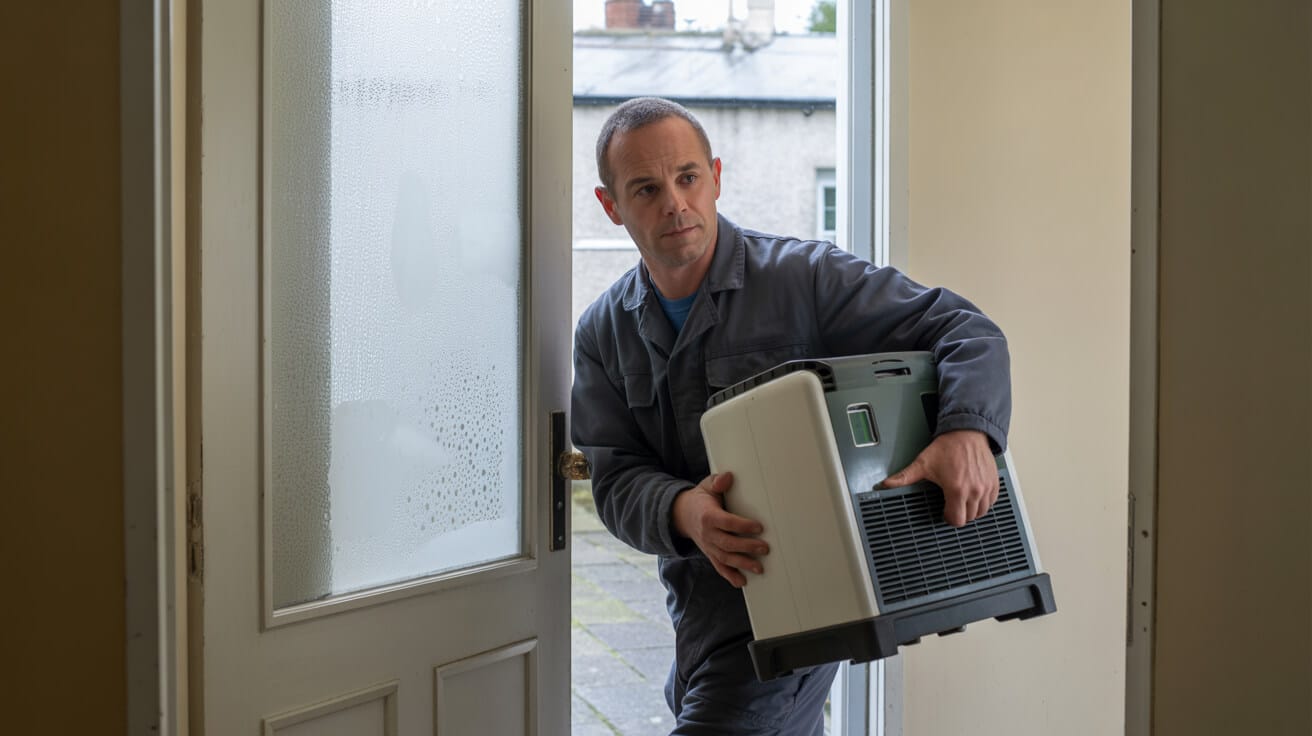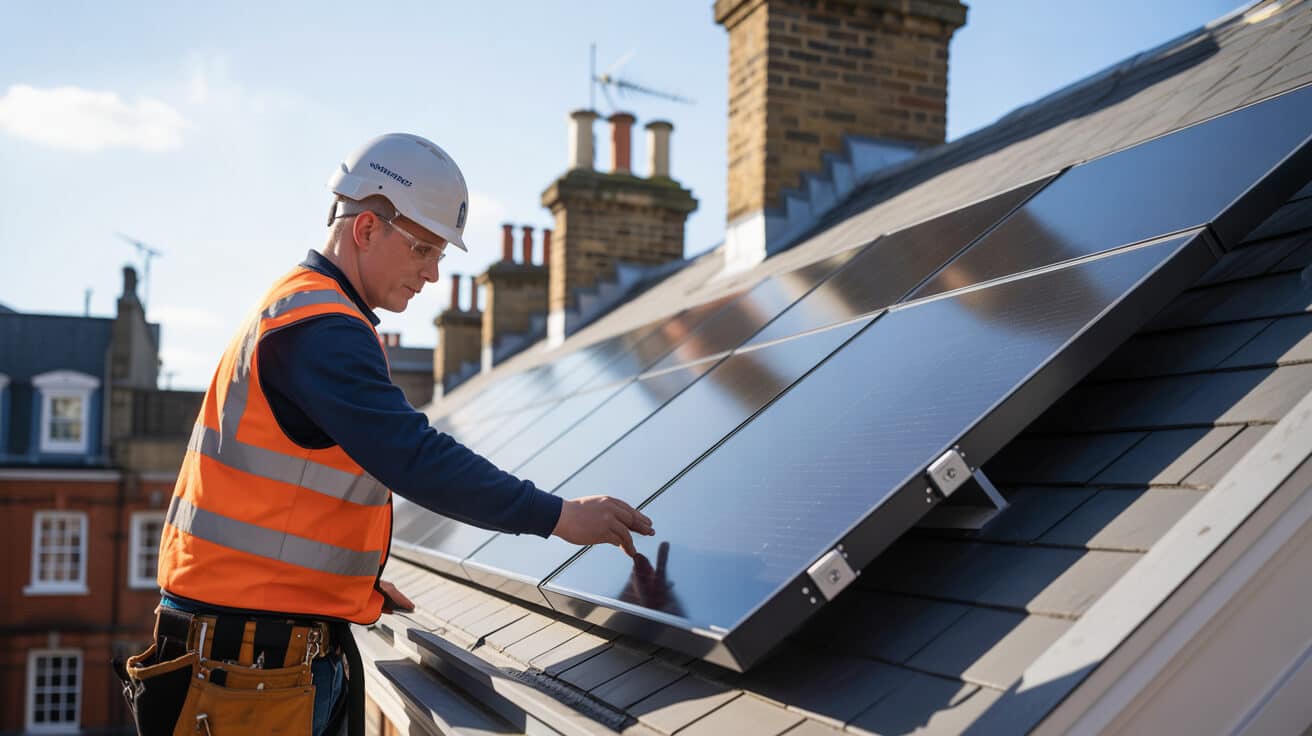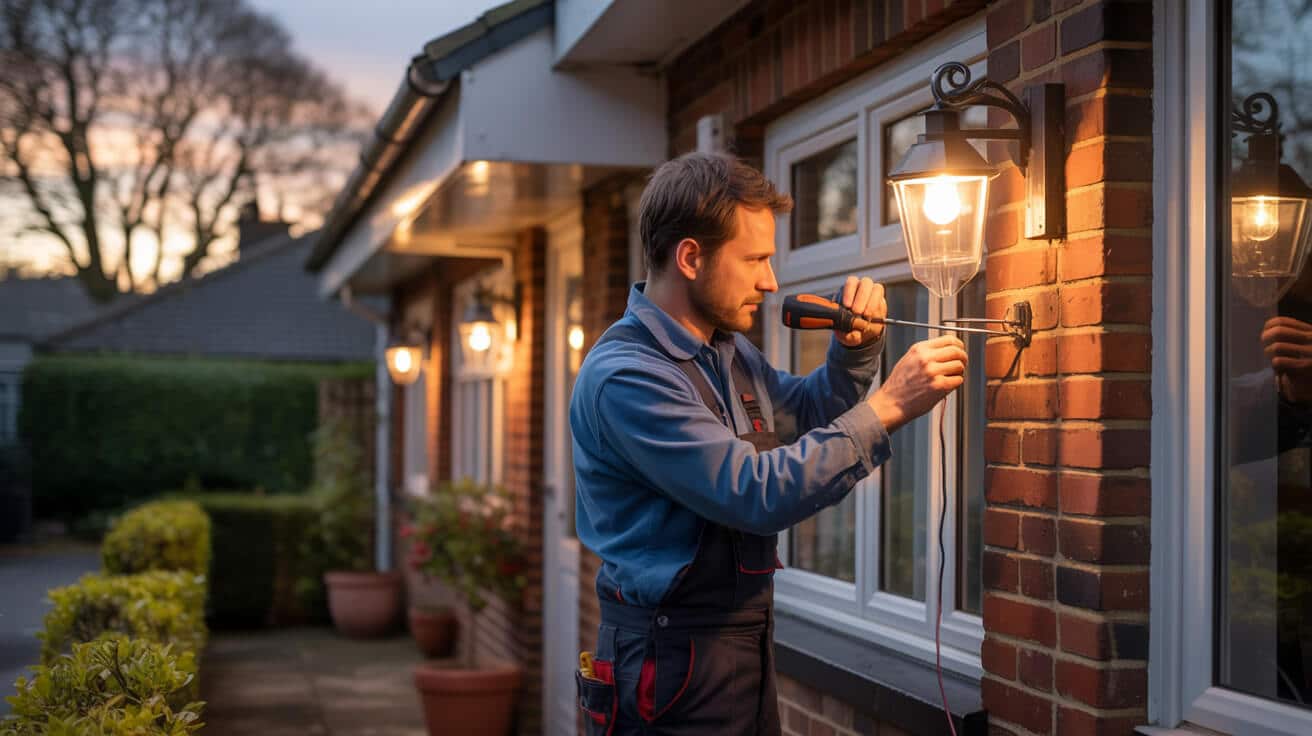 Ev Charger Installation For Businesses And Rental Properties
Ev Charger Installation For Businesses And Rental Properties

Why Are Brighton Landlords and Businesses Rewriting Their Timeline for EV Charger Installations?
Every property manager in Brighton is feeling the shift: what once sounded like a smart upgrade—“let’s add an EV charger when we get around to it”—has become a fast-moving necessity. The market and the legal landscape don’t let you drift. Delay right now, and you miss out: the last grant gets snatched, new building codes undercut your current plans, or a prime tenant slips through your fingers because another site could deliver the plugs they need.
Postpone too long and your ‘smart upgrade’ turns into a race to catch up, with twice the cost and none of the perks.
Brighton landlords and commercial property operators aren’t just responding to new tech—they’re dealing with a timeline they no longer write. Here’s why:
- Grants are disappearing faster than they’re announced.: OZEV and the Workplace Charging Scheme (WCS) often empty out in months. Once the current pot closes, that’s it—there are properties sitting on approved surveys but no funding, while others wait for the next unpredictable funding round.
- Codes keep changing, not just once but repeatedly.: The technical spec for chargers—BS 7671, not to mention local planning tweaks—is in motion. Projects that “passed” six months ago can now fail for a missed cable run or the wrong model in a conservation area ([UK Gov, 2024](https://www.gov.uk/guidance/commercial-chargepoints-minimum-technical-specification?utm_source=openai)).
- Tenants and buyers demand plug-and-play readiness as standard.: Recent numbers show 70% of commercial tenants and fleet managers in the UK make “reliable EV charging” a top-three qualifier when picking sites ([Fleet News, 2024](https://www.fleetnews.co.uk/news/latest-fleet-news/environment/2024/03/07/fleets-prioritise-ev-charge-points?utm_source=openai)). No charger? No deal. Landlords who miss this stop seeing viewings and lease renewals.
If you’re still operating on “someday,” you’re not just holding up progress—you’re losing it, daily. Each month’s delay invites new paperwork, missed rebate windows, and a growing risk that regulators or grant teams will bounce your application for moving too slow. Your competitors will thank you.
What Actually Makes a Property “EV Charger Ready” in Brighton—And Why Most Sites Aren’t Prepared?

In Brighton, ordering a flashy charger or signing a quick instal quote skips the step that matters: is your property even ready on paper and in the ground? Far too many owners buy the hardware (or book an installer) before confirming if the site meets legal, technical, and grant requirements. Reality check: most “failures” start this way.
A 60-minute survey now saves you months of chaos when the cables go in—and thousands if something isn’t up to code.
A property is truly “EV charger ready” only when you line up these factors:
- Parking and lease review.: Don’t just ask, “do we have a car park?” Dig into rights (who owns each bay?), covenants, and whether planning rules restrict charging infrastructure for your building type.
- Electrical capacity and distribution.: A qualified electrician must survey your main supply and sub-mains—most older buildings can’t take multi-outlet charging without an upgrade. Miss this, and your instal can grind to a halt with a mid-job ‘grid notification’ that costs double.
- Kit matched to real usage.: For residential and office blocks: single or dual-port AC wall boxes usually fit (budget £1-2K each). For retail, taxi, or depot: rapid DC units cost £15K+ and trigger extra permissions. Guessing leads to hideous over- or under-spend.
- Building and fire code sign-off.: If a charger blocks fire egress routes or skips BS 7671/Part P compliance, you’ll face tricky remediation—or enforcement fines.
- All documentation in hand.: Pre-fill every grant and compliance form, prep handover documentation, and confirm everything with the installer in advance.
If you can tick every line above, you’re actually ready. Otherwise, prepare to pay for rework—most Brighton instal headaches start with missed paperwork, not wires.
Where Do Compliance Shortcuts for EV Charging Projects in Brighton Really Backfire?

Everyone loves a shortcut until it trips you up. “Permitted development” laws make it tempting to dodge council forms or skip certifications on “simple” charger projects. But compliance cuts you make today often cost three times more weeks later—especially in Brighton’s conservation-rich cityscape.
It isn’t the wiring that trips most projects—it’s paperwork and missed planning steps.
Where Brighton projects get stung:
- Conservation and listed buildings demand maximum attention.: Landlords assume routine jobs fly under the radar. They don’t: in Brighton & Hove, any visible external alteration, particularly in a listed property or conservation area, can require planning approval. Skip it, and a council inspector might order you to rip out a brand-new charger—no appeal.
- Certification is not just a formality.: You can be 99% compliant but lose insurance or funding if you lack one certificate. Grants (OZEV, WCS) and most UK insurers demand BS 7671 and, for residential work, Part P outcomes—signed and stamped ([NICEIC](https://www.niceic.com/householders/electrical-services/electric-vehicle-%28ev%29-charger-installation-and-maintenance/?utm_source=openai)).
- Only accredited installers count.: Some owners save money by hiring “experienced” but non-accredited engineers. The result: no grant, denied insurance, warranties void. Even most DIY jobs end up costing more once you factor in missed funding.
Save yourself the stress. Compliance up front is about building credibility—tenants, insurers, and council all take a closer look at “green” infrastructure projects.
What Are the Real Costs of EV Charger Installations for Brighton’s Landlords and Businesses?

The quick quote you see in an ad—“instal from £999!”—doesn’t tell you the real storey. Savvy Brighton landlords look beyond the base instal. They know the typical job is a stack of must-have extras, most of them non-negotiable.
Here’s a grounded snapshot of what you’ll likely pay:
| Component | Typical Range | Use Case Example |
|---|---|---|
| **AC charger unit** | £1,000–£2,000 | Communal/rental parking |
| **DC rapid charger** | £15,000–£35,000+ | Fleet, retail, depots |
| **Cabling & site works** | £2,000–£25,000 | Ducts, grounds, signage |
| **Panel/grid upgrades** | £500–£5,000 | Metre upgrades, load boost |
| **Compliance/training** | £500–£2,000 | User guides, software, logs |
Most initial quotes skip over the trickiest elements: surprise groundworks (especially in older Brighton sites), the need to level or dig new cable routes, or mandatory DNO (grid) upgrades for anything beyond basic single-socket instals.
A detailed estimate upfront is worth more than a saving on a headline price. Ask for a full scope.
The best leverage? Require every provider to itemise, not lump together, your quote—then use that breakdown for grant claims, insurance, and contractor comparisons.
How Do Grants for EV Chargers Work—And Why Are They Harder to Get Than They Look?

Grant-fuelled installations make sense only if you can keep the funding once approval is in motion. The process is strict and your timing matters. Circles of property owners are finding out the hard way that admin errors, poorly documented instals, or simply being too slow wipes out their eligibility in seconds.
Here’s how to get a grant and not lose it:
- Start paperwork as soon as possible.: Secure your slot, especially for Workplace Charging Scheme (WCS), the moment you’ve confirmed electrical and planning compliance.
- Choose only an OZEV-approved installer.: Your application gets instantly binned otherwise. Ask your provider for their registration up front.
- Maintain a digital trail.: Every survey, certificate, permission, and sign-off should be one click away. The audit trail is your best friend when a grant officer checks weeks after the job finishes.
The main active schemes:
| Scheme | Grant Value | Per Property |
|---|---|---|
| Workplace Charging | £350 per socket, 40 max | Businesses, landlords |
| Leaseholder/domestic | £350, 1 max | Flat owners/tenants |
Ninety percent of grant denials are down to missing or misfiled forms, not dodgy wiring. ([Find Gov Grants](https://find-government-grants.service.gov.uk/grants/workplace-charging-scheme-2?utm_source=openai))
Expert providers know how to batch your paperwork and double-check every grant tick box. Don’t do it all yourself without a paper trail.
What Mistakes Actually Derail EV Charger Projects—and How Do You Avoid Them?

Most “cost blowouts” or delays aren’t down to rogue contractors—they’re simple skip-steps that cost dearly: the wrong installer (not OZEV-approved), skipping vital safety checks (like notifying the grid or running a resistance test), or not lining up access with a freeholder or key tenant.
What to watch for:
- Non-registered installer: A completed instal done by the wrong party disqualifies you for grants and insurance—beyond appeal.
- Skipped grid notification: Failing to alert your local DNO before work causes retroactive fines, mandatory works, or total job stoppage ([ESI Electrical](https://esielectrical.co.uk/workplace-electric-vehicle-charging-surrey/?utm_source=openai)).
- Communication gaps: Not getting agreement with tenants (on parking, disruptions, aftercare) draws out the project, sparks claims, and can even drag in solicitors.
Real Brighton example? A landlord missed both the survey and notification steps, had their insurance claim denied, and lost months of rental while £3,000 went into ground-up rework.
If an installer says ‘it’s fast and easy, no hassle,’ ask more questions. Speed hides corner-cutting.
Relentless project management and communication—plus a written scope with built-in fallback steps—is how you come out ahead.
How Do You Protect Your Charger Investment—and Make Sure Your Insurance Stays Valid?

An EV charger is not “fit and forget”—your asset, and your compliance, needs to hold value five or ten years from now. Insurance, warranties, tenant promises—they’re only as watertight as your long-term maintenance and documentation.
Think of your charger as a managed asset:
- Annual EICR (Electrical Installation Condition Report): Required for insurance and best practice; treat it like an annual MOT for your property’s circuits.
- Logbook of every check, call, or upgrade: No paperwork means no claim. Keep every document digital, accessible, and up-to-date.
- Clear handover guides: Every user, team member, or tenant needs instructions—not just on “how to charge,” but who to call when the inevitable error pops up.
- Routine cleaning, firmware, and checkups: Scheduled site visits flag problems before they hit. Dust, weather ingress, or a skipped firmware update kills performance and can end warranties ([Energy Saving trust](https://energysavingtrust.org.uk/advice/ev-charging-for-businesses/?utm_source=openai)).
Aftercare is your shield. Insurers, future buyers, and tenants care more about logs than loyalty.
Long-term value (and protection) comes from a cycle of scheduled checks and communicated handovers.
What’s the Smart, Low-Risk Path to a Grant-Protected, Future-Ready EV Charger in Brighton?

With changing requirements and a shrinking grant window, the safest way through the maze is to start with a survey by a grant-qualified, certified technician—someone who manages both the technical and the paperwork sides of the job.
Your checklist:
- Get a property and grant readiness assessment up front.: No plan, no instal—make sure codes, technical limits, and freeholder/tenant issues are checked, not guessed.
- Let your installer handle every document and grant submission.: Delegation means no missed forms or calendar slip-ups.
- Only hire certified, fully insured, and Council/PAS-checked providers.:
- Request a pack with all: survey, compliance forms, warranty certificate, and ongoing support plan.:
- Demand transparent, itemised quotes: that let you compare apples-to-apples, not headline rates hiding future extras.
All Services 4U has delivered for over 150 Brighton business owners and landlords in the past year, securing funding, passing audits, and avoiding “whoops” charges:
- Fully City & Guilds and NICEIC accredited, OZEV- and DBS-checked
- Known for “no headaches, no drama” support on residential, commercial, and mixed-use properties
- Online job tracking and digital aftercare
- Clients highlight survey-to-instal handholding and 5-star aftercare
A good survey up front might be invisible, but fixing a shortcut gets you noticed for all the wrong reasons.
Queue your grant claim and instal plan in one move by starting with a site survey.
Take Action: Book Your Brighton EV Survey With All Services 4U Today
If you’re reading this, waiting just got expensive. Grant funding and property deals move to the organised, not the indecisive. Lock in your compliant, upgrade-ready status while funding and expert teams are available—before new rules or the next council clampdown ups the ante.
Download your step-by-step EV charger compliance checklist now, or message All Services 4U’s accredited team for a rapid-status site report. We’ll map the risks, show you exactly where you stand, handle the forms, and deliver the instal you can actually rely on—no grant left behind.
All Services 4U—Trade-Certified. Grant-Ready. No Nonsense. Your EV charger, your advantage, your timeline.
Frequently Asked Questions
Who stands to gain or lose the most from installing EV chargers at UK business and rental properties?
Choosing to instal EV chargers isn’t just a box to check—it’s an investment that can dramatically affect your property’s marketability, value, and desirability. Owners and managers of commercial and rental sites are directly impacted, but the ripples hit tenants, staff, contractors, and even investors. Decisions you make now shape lease renewals, insurance costs, and competitive standing for years to come. As businesses and residents expect greener infrastructure, being a step ahead means shielding yourself against sudden value dips or regulatory snags. At the pace the UK is transitioning to electric vehicles, treating EV charging as an optional extra is a fast track to asset stagnation.
“Right now, your competitors are either plugging in new value or unplugging future prospects—both choices are visible in every letting cycle.”
How do different stakeholders feel the effects?
- Property owners/landlords: Unlock new tenant segments, command higher rents, protect against discounting from EV-lacking units.
- Facilities/caretaker teams: Face less reactive pressure by futureproofing the site, rather than racing to retrofit against emergencies or tenant complaints.
- Commercial tenants/occupiers: Attract and retain high-calibre staff, secure longer-term leases, and satisfy sustainability compliance.
- Insurers/investors: Adjust risk and premium calculations based on charging capability, rewarding proactive properties.
- Site visitors and customers: Choose EV-capable destinations more often, directly influencing retail or office footfall.
What property types experience the sharpest shift?
While all property sectors are evolving, mixed-use blocks, shared parking sites, and older buildings in high-uptake areas (London, Manchester, Bristol) are under the highest scrutiny. For these, chargers aren’t just a tick-box—they’re a non-negotiable part of the shortlisting process.
What happens to sites that defer action?
Evidence from leading surveyors and facilities firms in 2024 confirms that time-to-let is extending for properties without EV provision, and yield compression is most acute in mid-market office and retail/warehouse assets that ignore upgrades. This shift isn’t theoretical—it’s baked into how tenants, agents, and underwriters triage their options.
What UK regulations and compliance hurdles matter when installing EV chargers for business or landlord use?
Every EV charger installation on UK business or rental property travels a compliance runway that’s longer—and sometimes trickier—than many anticipate. You are governed by multiple statutory codes: Electrical safety (BS 7671:2018), Building Regulations (Part P for resident-facing locations), landlord safety law, and sometimes local council planning rules. Even sites with “permitted development” rights can find those trumped by proximity to listed status, conservation boundaries, or existing planning covenants.
The key is to assemble a watertight documentation trail: installation certificates, DNO (Distribution Network Operator) approval, grant paperwork, and user-accessible aftercare logs. If any element is missing or your installer lacks the right credentials (NICEIC or NAPIT for commercial, OZEV for grants), everything from grant payouts to insurance renewal can buckle.
What are the must-not-miss compliance steps?
- Confirm your installer’s accreditation and up-to-date insurance coverage.
- Verify local planning status—never assume all offices or blocks qualify for permitted development.
- Secure DNO clearance for power supply upgrades (miss this, face grid shutdowns or fines).
- Collect and store every EIC, compliance log, and survey digitally for fast audit retrieval.
- For communal spaces, add accessibility and fire safety checks to your list—these areas trigger extra scrutiny.
Are there “grey area” risks?
Absolutely. Some of the costliest scenarios in 2024 involve sites that relied on commercial handyman teams for installation, only to discover at audit—or insurance claim—that a formal, regulated contractor was mandatory. These failures delay grant claims, void policies, or in rare cases, require full system removal and reinstallation.
How does All Services 4U mitigate compliance risk?
By providing a staged compliance roadmap, acting as both technical and legal shepherd, and taking full accountability for documentation, All Services 4U reduces admin stress and eliminates gaps that could cost owners six figures over the lifecycle of their asset.
How do you break down the real cost of installing business or landlord EV chargers without being caught off guard?
Seeing a headline quote for EV charger installation is like glimpsing only the tip of the iceberg. The final price reflects hardware, groundwork, grid upgrades, planning, compliance, and future aftercare—each a separate lever that can push costs up with a single oversight. For a 20-charger instal on a 1970s commercial estate, what starts as a £30,000 plan may hit £50,000 with just one grid or groundwork surprise.
“If your installer isn’t pushing you to ask, ‘What am I missing here?’, cost overruns are almost guaranteed.”
What cost elements go beyond the basics?
- Hardware: Each 7-22kW AC unit averages £1,200–£2,200; DC rapid units can start at £15,000.
- Groundworks/cabling: Sub-surface runs, trenching, and reinstatement are typically £4,000–£12,000 per site, varying with bay distance and surface type.
- Grid/panel upgrades: Extra supply or new consumer units range from £1,000–£8,000+ depending on age and current infrastructure.
- Planning/compliance: Fees and admin rarely fall below £300–£2,500—more if listed or shared access areas are involved.
- Aftercare & user training: Annual plans range £350–£1,500 but act as insurance against future defects or compliance failures.
What causes budgets to spiral mid-project?
- Unseen grid capacity limits (especially in legacy retail or mixed blocks).
- Vulnerability to subsurface obstacles: protected trees, old drain runs, or unexploded planning restrictions.
- Underestimating admin—DNO signoffs, planning officers, or grant paperwork can each add weeks if mismanaged.
How do you defend your budget?
Demand an itemised quote with “worst case” and “typical case” columns. Ask for a pre-instal grid and surface survey, not just a sales site visit. Confirm aftercare deliverables so hidden lifetime costs don’t eat your margin.
Charger Cost Breakdown Table
| Component | Usual Range | Change Triggers |
|---|---|---|
| Hardware | £1,200–£15,000+ | Model, output, volume |
| Ground/Cabling | £4,000–£20,000 | Surface, bay count, site history |
| Grid Upgrades | £1,000–£8,000+ | Panel age, local supply, capacity |
| Planning/Admin | £300–£2,500 | Local regs, communal settings |
| Aftercare/Support | £350–£1,500 | SLA, user mix, compliance plan |
What grants or incentives can owners and landlords use—and what changes in 2024?
The government continues to back EV infrastructure expansion, but the eligibility and claim process for grants is more exacting than ever. The Workplace Charging Scheme (WCS) remains the staple for most businesses, with 75% cost coverage up to £350 per charger (for up to 40 sockets). Parallel schemes for landlords and leaseholders now extend to multi-family blocks and rented commercial space under the latest OZEV EV Chargepoint Grant.
“Letting a grant slip through the cracks is like leaving money on the road outside your asset—every missed document, every audit failure, costs real value.”
How do you qualify without headaches?
- Start with a full eligibility audit: permitted planning, property use class, and energy supply status.
- Use only NICEIC, NAPIT, or OZEV-accredited installers. No exceptions if you want grants or compliant insurance.
- Gather all paperwork *before* ordering hardware or agreeing to works: council planning, DNO approval, and leaseholder signoff are must-haves.
- Prepare your digital “grant pack” in advance and double-check all supporting documents.
- Watch for local council or combined sustainability incentives, which may offer rate reductions or additional grant supplements (these funds can be exhausted months before year-end).
Key grant schemes for 2024:
| Scheme | Funding | Eligible Users |
|---|---|---|
| Workplace Charging | 75% up to £350/charger (40/year) | Business owners, commercial landlords |
| OZEV Landlord | Up to £350/charger, rental blocks | Landlords, leaseholders, housing managers |
| Local Council | Rate/top-up, often ESG linked | Businesses, properties meeting criteria |
What issues trigger failed grant claims?
Relying on generalist contractors, moving ahead without digital records, or postponing paperwork until after instal. Each is a frequent point of loss flagged repeatedly by OZEV and council auditors in 2024.
Where do most EV charging projects in commercial or rental spaces fail or get delayed—and how can you dodge the traps?
The majority of problems trace back not to hardware, but to sequence and oversight. You’re vulnerable to delays, grant rejections, or even insurance shortfalls when the chain of permissions, paperwork, and stakeholder approvals gets even slightly out of order. DNO approval needs to land before you order hardware; leaseholder or tenants should be looped in during planning, not after. Fail to keep a digital “paper chain,” and both auditors and insurers may treat the whole instal as void.
The most common derailers:
- Contractor selection based on lowest price, not right credentials. Generalist electrical licences are not enough.
- Skipping pre-approval from DNO, council, or leaseholders—leading to late-stage backtracking or fines.
- Postponing digital record-keeping until after the instal, risking loss of critical grant or compliance documents.
- Undervaluing ongoing training and aftercare—incorrect or unsafe use crops up most as an avoidable recall event.
How do best-in-class service providers shield you?
They run a “permissions-first” model: DNO, planning, stakeholder sign-offs, and grant approval are locked in before a spade hits the ground. Real protection means every action is logged, every stakeholder briefed, and aftercare is as robust as the initial fit-out.
What secures your EV charging investment after installation—who manages compliance, risk, and ongoing value?
After the instal, responsibility for maintaining compliance, asset value, and operational resilience lands squarely with landlords, property managers, and facilities teams. Regular inspections, digital log maintenance, user onboarding, and training are now standard—not luxury—across insurance and tenant management. Annual EICRs, digital certification packs, and defined aftercare SLAs are expected by emerging property standards groups and insurers alike.
“An EV charger is an appreciating asset only if its records, users, and compliance chain stay complete and current—otherwise, it’s a liability.”
Who does what, and how does All Services 4U lock down compliance?
- Landlords/asset managers: Own the annual cycle—schedule EICRs, maintain digital records, update certifications.
- Facilities/caretaker teams: Track daily maintenance, user onboarding, and incident management.
- Service partners/installers: Provide rapid troubleshooting, records management, and ongoing compliance advice.
- Tenants/users: Receive training, report issues, and can access documentation as needed.
Checklist to stay ahead:
- Ensure every user and test is logged, digitally and in real time.
- Schedule annual compliance tests, not just at policy renewal.
- Require a single digital access point to reports and SLAs for all stakeholders.
- Establish onboarding channels for new tenants or staff as properties turn over.
Properties that treat EV chargers as ongoing services—rather than “instal-and-ignore” assets—sit at the top of tenant wish-lists, retain higher valuations, and pass every compliance review with confidence. All Services 4U’s aftercare plans and support lines handle the lifecycle so you can focus on your portfolio, not paperwork.



